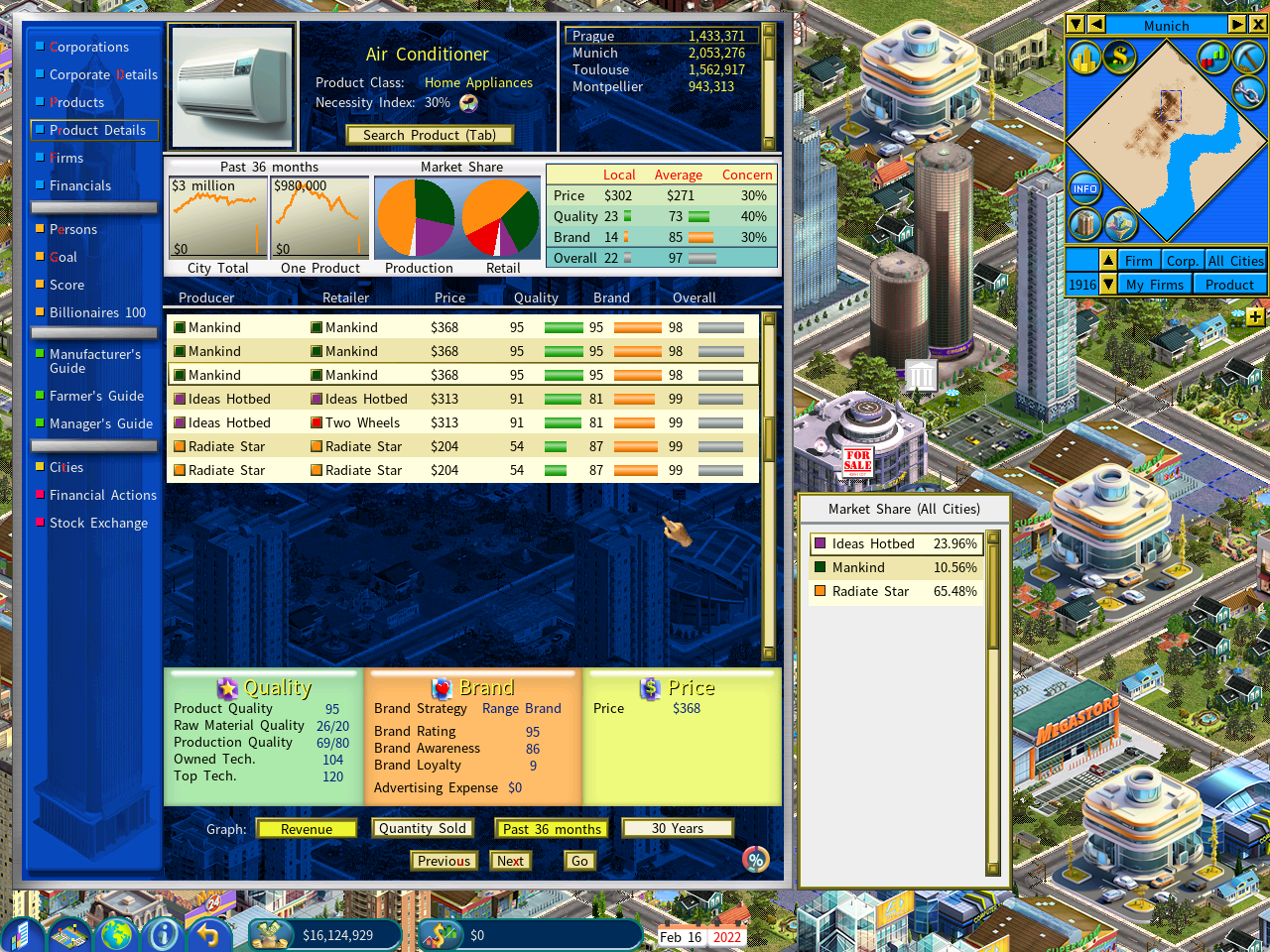Practicing SWOT Analysis Through Capitalism Lab
SWOT analysis is a strategic planning technique used to help a person or organization identify their internal Strengths and Weaknesses, as well as external Opportunities and Threats.
Capitalism Lab is a business simulation game that allows players to run their own virtual company and compete against other players or AI-controlled companies. The game provides a great opportunity for students to learn about the SWOT framework.
Here is an example SWOT analysis essay that a student could write after managing an air conditioner company in Capitalism Lab.
Title: SWOT Analysis of an Air Conditioner Manufacturer in Capitalism Lab
In this essay, I will analyze the strengths, weaknesses, opportunities, and threats (SWOT) of an air conditioner manufacturer that I managed in Capitalism Lab. By examining the internal and external factors that affect the company, I will provide a comprehensive assessment of its performance and identify strategies for improvement.

Strengths
1. High-quality products: The company produces high-quality air conditioners that are well-received by consumers. In the game, I was able to invest in research and development to improve the air conditioners’ features and performance, which led to increased customer satisfaction and loyalty.
2. Strong brand image: The company has a strong brand image, which is reflected in its high level of recognition and positive reputation in the market. This allowed me to charge a premium price for the air conditioners and maintain a healthy profit margin.
3. Effective marketing strategies: The company’s marketing strategies are effective in reaching and engaging with the target audience.
Weaknesses
1. Limited product diversification: The company only produces air conditioners, which makes it vulnerable to changes in market demand and competition. To address this weakness, I explored the possibility of expanding the product line to include related products, such as compact versions of air conditioners.
2. High production costs: The company’s production costs are relatively high, which puts pressure on the profit margin. I attempted to reduce costs by improving operational efficiency and renegotiating supplier contracts.
Opportunities
1. Emerging markets: There are opportunities to expand into emerging markets, where there is growing demand for air conditioners. I conducted market research to identify potential markets and developed strategies to enter them.
2. Technological advancements: Rapid technological advancements in the air conditioner industry present opportunities for the company to innovate and differentiate its products. I closely monitored industry trends and invested in research and development to stay ahead of the competition.
Threats
1. Competitive market: The air conditioner market is highly competitive, with many established players and new entrants. To address this threat, I focused on building a strong brand image and differentiating the air conditioners through continuous investments into research to achieve superior quality.
2. Economic downturns: Economic downturns can reduce consumer spending and negatively impact the company’s sales and profitability. I developed contingency plans to mitigate the risks of economic fluctuations, such as diversifying the product line and reducing costs.
3. Rapid technological changes: Rapid technological changes can render the company’s products obsolete and make it difficult to keep up with the competition. I closely monitored industry trends and invested in research and development to ensure that the air conditioners remain relevant and competitive.
Conclusion
In conclusion, the SWOT analysis of the air conditioner company reveals its strengths, weaknesses, opportunities, and threats. By leveraging its strengths, addressing its weaknesses, capitalizing on its opportunities, and mitigating its threats, the company can improve its performance and achieve long-term success in the competitive air conditioner market. Through this exercise, I have gained valuable insights into the management of an air conditioner company and the application of SWOT analysis in business decision-making.
